If you’re a healthcare marketer looking to energize your marketing programs, agile marketing offers a more reactive, responsive approach that can significantly improve your results and ROI. Instead of the top-down, traditional waterfall model, where an agency is briefed by the business, goes away, and comes back with a comprehensive communications campaign, agile marketing is about creating content that is timely, relevant and useful to communicate with customers in any phase of their journey. Agile processes and execution are the keys to succeeding with agile marketing.
The concept of agile project management has been around for a while. It first emerged in the areas of software development and IT. Developers and IT departments found that testing new features and getting quick feedback from customers during development was a lot more productive than launching a finished product that might – or might not – align with their customers’ needs.
Many companies have since extended the concept across all aspects of their businesses, from human resources to supply chain management. And many organizations have been agile right from start – think Amazon, Facebook, Google or other digital giants, who never had to break free of an old-style management structure.
Why opt for agile marketing?
The benefit for software developers and IT departments is saving time and costs. Rather than launching a finished product and hoping for a positive response, an agile approach guarantees that the product meets the needs of the targets because it’s been tested, refined and tested again – ensuring greater success for the commercial launch, or company-wide rollout of a new application or platform.
With an agile approach, organizations can react with speed, and get products to market more quickly. The framework is based on cross-functional project teams, who work toward their goals by breaking projects into small milestones, checking progress frequently, and seeking customer and/or stakeholder feedback at all stages.
For marketers launching go2market strategies, the adoption of an agile marketing approach might include creating multiple project teams, building an open and ongoing feedback loop with their customers or stakeholders, and holding frequent scrums (daily, weekly or bi-weekly, for example) to review progress and plan next steps.
» Download your free e-book on healthcare marketing «
Benefits for marketers
For marketers, the potential benefits of agile marketing are measurable – to save time, reduce costs, and ensure that marketing programs meet expectations and ROI. It’s focused on much smaller goals and activities, informed and directed by frequent scrums, sprints and de-briefings, creating a culture of kaizen: maintaining data, experimenting and learning from failures to always improve.
While an agile approach offers benefits across most organizational functions, it’s particularly advantageous for marketing. The main reason is the speed and scope of the digital environment. When a single post or tweet can affect sales, compliance or even reputation, it’s critical to respond with speed. And being able to check and measure programs and campaigns as they go live, in small increments, means you can adjust your messaging or targets to really zero in on your goals. What you learn from a micro email campaign in one country, for example, can be incorporated to strengthen the campaign as you launch into other countries and regions.
Challenges for healthcare
For many organizations, with established top-down hierarchies, it can be a challenge to switch to an agile framework. This can be especially true for healthcare companies, with stringent compliance, legal and regulatory requirements, not to mention complex and lengthy development and approval cycles and processes.
Embracing a hybrid approach to agile
A hybrid approach can support these requirements, while offering greater agility and faster response to marketers. These are some ways you can shift to a more agile marketing style:
- Create cross-functional teams that are focused on specific goals and milestones (i.e. lead generation, customer retention, or new product launches)
- Break projects into small, measurable chunks
- Measure all progress in daily or weekly scrums, where you review what’s been accomplished, assign responsibilities and spell out next action steps
- Involve your agency in the daily or weekly scrums
- Make sure you have the right tools, and access to the right data
- Try lots of things, and choose the most effective ones – use A/B testing, different headlines, CTAs, etc.
- Involve legal, regulatory and compliance at the beginning of each project – don’t wait until the end
- Create a bank of approved content and messaging that you can use as you need, rather than having to put things back into approval as you adjust your messaging
- Introduce a feedback loop that you use for all elements and programs – plan, design, launch, feedback, adjust, launch …. and repeat
With agile marketing, communication is key.
Beyond your project teams, make sure you’re communicating your programs, processes and milestones to all relevant stakeholders across your organization. Another department might not operate in an agile way, but if they understand your marketing goals and structure, they will be better able to support you. Legal and regulatory, for example, might assign someone to each of your project teams to help smooth the approval processes.
At Living Stone, we’re experts in agile marketing, and incorporate it into the programs we provide for our customers. We understand the importance of proceeding incrementally, using a range of tools (message testing, pilot projects, etc.) in order to strengthen marketing programs with greater insight. And with our ‘idea boxes,’ tailored to the needs and situation of each of our clients, we present out-of-the-box ideas to energize programs and campaigns.
If you’d like to learn more about agile marketing, and how you can make the switch or incorporate aspects into your marketing programs, contact Anne-Mie Vansteelant at Living Stone, at +32 55 591 007 or anne-mie.vansteelant@livingstone.eu.
Resources
Darrell K. Rigby, Jeff Sutherland, Andy Noble, ‘Agile at Scale,’ Harvard Business Review, May-June 2018 issue, retrieved from https://hbr.org/2018/05/agile-at-scale
Derek Derouin, ‘Agile marketing: Turning theory into practice,’ 2019, retrieved from https://www2.deloitte.com/ca/en/pages/consulting/articles/agile-marketing.html#
Alan Schulman, ‘Agile marketing: Content at the speed of culture,’ 2019, retrieved from https://cmo.deloitte.com/xc/en/pages/articles/agile-marketing-methodologies-case-study-content-at-the-speed-of-culture.html


.jpg?width=727&name=Living-Stone-CTA-Blog%20(002).jpg)

